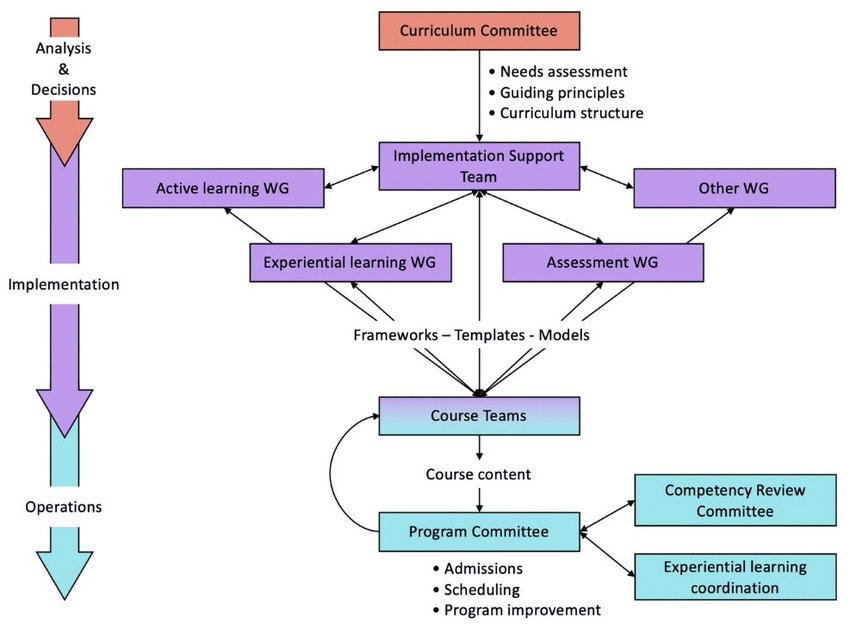What is a Working Group (WG) and How Does It Operate?
telcomatraining.com – In today’s collaborative world, effective teamwork is essential to achieving complex goals, whether within an organization, academic setting, or community-driven initiative. One of the most common structures employed for collaboration is the Working Group (WG). But what exactly is a Working Group, and how does it function? This article dives into the concept of a Working Group, its purpose, and its operational mechanisms, offering insight into how it helps streamline decision-making and problem-solving.
What is a Working Group (WG)?
A Working Group (WG) is a collection of individuals who come together with a shared objective, often to tackle specific issues, develop solutions, or drive projects forward. These groups are typically formed within organizations, governmental bodies, academic institutions, or communities, bringing together experts, stakeholders, or individuals with specific skills or interests. The members of a Working Group collaborate to pool knowledge, resources, and ideas to solve a problem or contribute to a broader goal.
Working Groups are often temporary in nature and can vary greatly in size, structure, and focus. They may be tasked with addressing technical challenges, creating guidelines or recommendations, drafting policy documents, or discussing strategic planning. Depending on their purpose, a Working Group may also be known by other names, such as task forces, committees, or panels.
Purpose and Benefits of a Working Group
The primary purpose of a Working Group is to bring together diverse expertise to solve problems or achieve specific objectives. By assembling people with varied perspectives and skills, Working Groups are able to address challenges in a more comprehensive manner.
Here are some benefits of utilizing a Working Group:
- Diverse Expertise: A Working Group combines individuals from different backgrounds, offering a rich mix of knowledge and insights that can result in more innovative solutions.
- Focused Attention: Members of a Working Group focus on a particular issue, allowing for deeper analysis and quicker resolution compared to broader committees.
- Efficiency: By narrowing the focus of the group, decision-making processes can be expedited, and tasks can be delegated to the right people, enhancing overall efficiency.
- Collaboration and Networking: Working Groups foster collaboration, allowing members to build professional relationships and share resources that can be beneficial in the long term.
How Does a Working Group Operate?
The operation of a Working Group is shaped by its structure, objectives, and the environment in which it is formed. While every Working Group is different, there are common features in terms of how they function.
1. Establishment of Objectives
The first step in forming a Working Group is to define clear, measurable objectives. The group must understand its purpose, whether it’s to solve a problem, create a policy document, or develop a product. Setting concrete goals ensures that everyone remains aligned and focused on the desired outcome.
2. Selection of Members
The members of a Working Group are usually selected based on their expertise, experience, or relevance to the task at hand. In many cases, members are invited to join due to their specialized knowledge or involvement in the issue being addressed. A diverse mix of skills, perspectives, and backgrounds is critical to fostering creativity and well-rounded decision-making.
3. Task Delegation
Once the group is established, tasks are divided among members according to their expertise. For example, if the group is working on a research paper, some members may handle literature review, while others may be responsible for data analysis or writing sections of the document. Clear delegation ensures that all aspects of the project are handled efficiently and that no tasks are overlooked.
4. Regular Meetings
To maintain momentum, Working Groups typically schedule regular meetings to discuss progress, share updates, and address any challenges. These meetings serve as opportunities to brainstorm, provide feedback, and track milestones. Depending on the nature of the group, meetings may take place weekly, bi-weekly, or on an ad-hoc basis.
5. Decision-Making and Consensus
The decision-making process in a Working Group often revolves around collaboration and consensus-building. Rather than relying on hierarchical authority, members share opinions, debate ideas, and work together to reach a mutually agreed-upon solution. In some cases, a lead or chairperson may be designated to guide the group and ensure that objectives are being met, but the emphasis is usually on collective input.
6. Reporting and Documentation
As the group progresses, it’s essential to keep thorough records of meetings, decisions, and milestones. This documentation not only provides a reference for members but also helps communicate the group’s progress to external stakeholders or higher management. In some cases, the final report or recommendation may be formally presented to a governing body or organization.
Types of Working Groups
Working Groups can vary in their scope and purpose, with different types being suited for different objectives. Some common types include:
- Technical Working Groups: Focus on solving specific technical issues, such as developing new technologies or solving engineering challenges.
- Policy Working Groups: Tasked with analyzing, recommending, or developing public policies.
- Advisory Working Groups: Offer guidance and advice on specific issues or projects but may not have decision-making authority.
- Research Working Groups: Focus on conducting research and publishing findings.
Conclusion
A Working Group (WG) is a valuable tool for collaboration and problem-solving. By gathering individuals with specialized knowledge and skills, Working Groups can achieve objectives more efficiently and with a higher degree of innovation. Whether in business, government, or academia, the success of a Working Group depends on clear goals, effective communication, and active participation from all members. With proper structure and coordination, a Working Group can be a powerful force for change and progress.







